In the summer of 2021, the decision will be made to include Bad Kissingen and other spas on the Unesco World Heritage List. The Great Spas of Europe alliance consists of eleven world-famous spa towns in seven European countries. All of them, whether Karlovy Vary in the Czech Republic, Bath in Great Britain or Vichy in France are Great Spas because they established the spa town type of city in the 18th and 19th centuries. The characteristics with which these spa towns entered the race for the Unesco designation years ago have their origins in a past that is still ubiquitously visible today. There are seven mineral-rich healing springs on which Bas Kissingen’s reputation as a world spa is based. More than 500 years ago, physicians recognized their healing, soothing or preventive effects, or to use the acronym SPA: Sanus per Aquam.
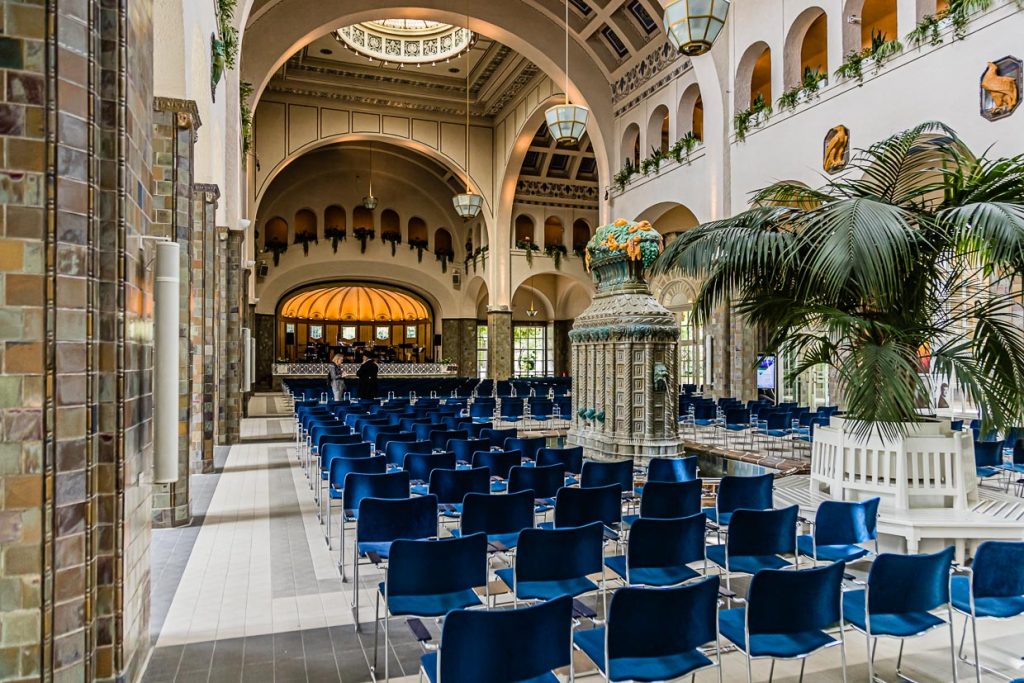
Wandelhalle and fountain women of Bad Kissingen
In Bad Kissingen, the buildings of the spa garden ensemble are extremely well preserved. Above all, the Wandelhalle and Regentenbau by architect Max Littmann, as well as the spa garden laid out in 1738. If you take an early morning stroll along the Saale toward the Wandelhalle to sip one of the four healing waters before breakfast, it is easy to imagine the ladies and gentlemen of the Belle Époque who once attended their spa treatments here in hats and long fur-trimmed coats. This journey through time also succeeds so well because at the early hour between 7 and 9 a.m., not a soul of today’s Bad Kissingen is on the move. Spa guests and rehabilitation patients stay in their clinics. The ritual of the healing water cure has unfortunately not yet made it back into the daily routine of the spa guests of the 21st century.
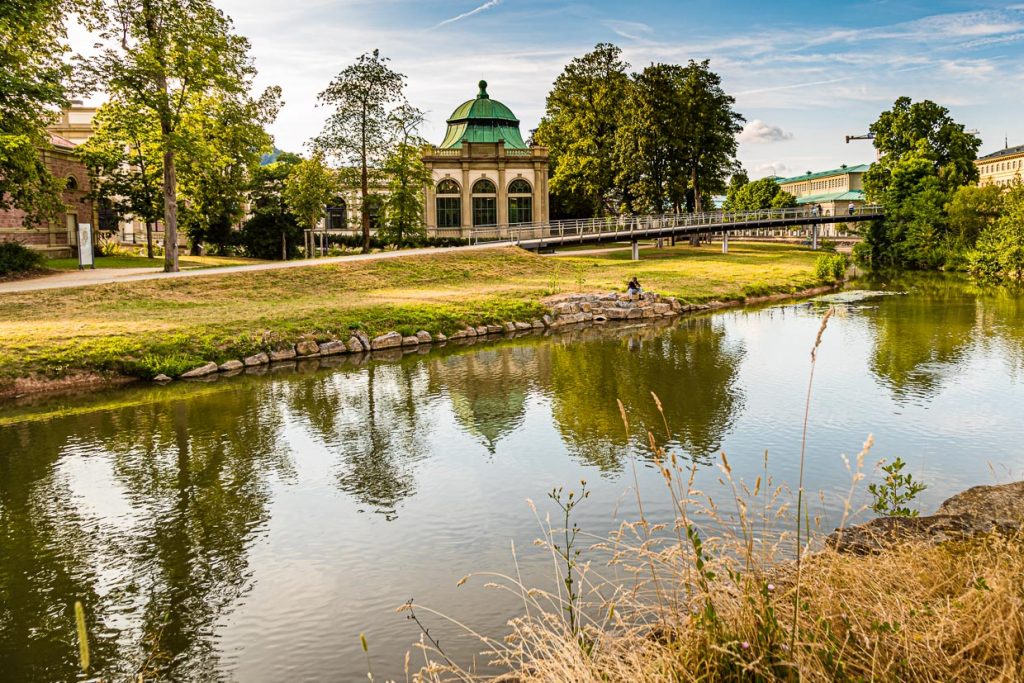
Time travel – walking in the morning hours
Walking in the morning hours through Europe’s largest and very splendid Wandelhalle is like offering a free journey through time. The fact that it is little used is surprising to the point of incomprehensible, because the services of the fountain women are covered for every spa guest with their spa tax. Against deposit of the spa card, the guest receives the typical Bad Kissingen drinking glass. With it he then goes to the fountain woman, who advises him on questions of application and then pours from one of the four Kissinger healing waters Pandur, Rakoczy, Max or Luitpold.
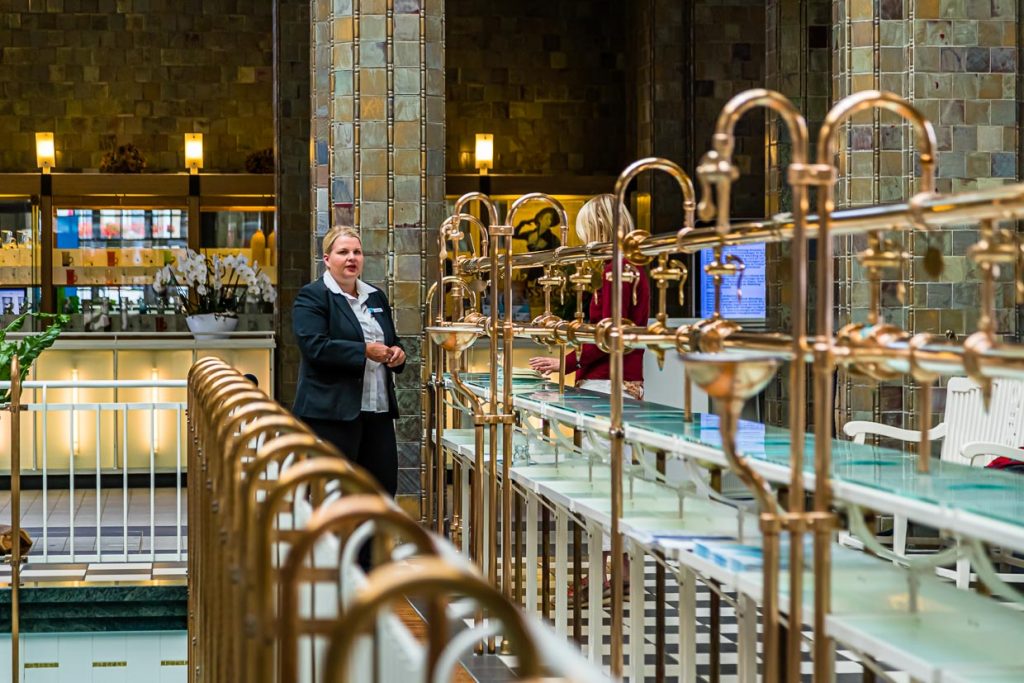
The term Wandelhalle comes from exactly what you are supposed to do in it. With a glass of healing water in hand, the spa guest strolls through the hall to the music of the salon orchestra. The relaxation and peace that flows through the guest promotes the absorption of the valuable minerals and trace elements. In the morning you have the beautiful Wandelhalle almost to yourself. The salon orchestra plays only at 10.30 o’clock. Then again, there is no medicinal water dispensing, because the medicinal water should be drunk before meals. In the afternoon, however, the comfortable spa guest has the chance to combine three of the attractions of the spa town of Bad Kissingen, namely the healing water application, the salon orchestra and the Wandelhallenwandeln.
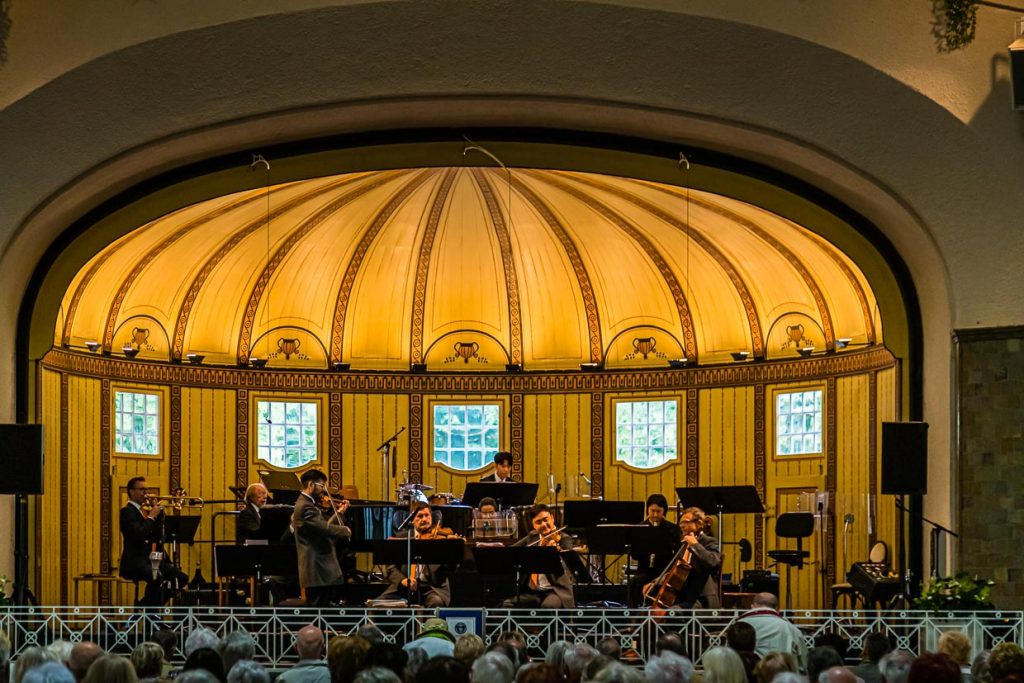
Sonorous names – Max, Pandur, Rakoczy and Luitpold
Fountain women have been around since 1911. The fact that they still exist today is an intangible value that Bad Kissingen can put on the scale for its Unesco application to become a Great Spa of Europe. The trained well women advise which healing water brings relief for which ailments.
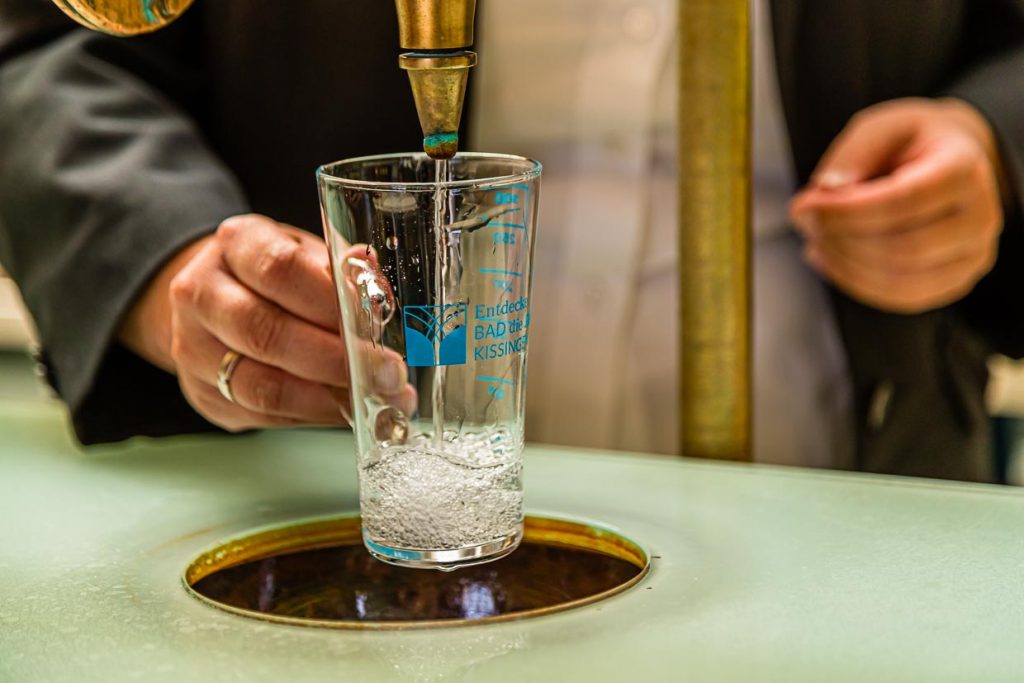
For example, water from the spring of the Max Fountain, drunk warm, helps with colds, aids expectoration and flushes the kidneys and bladder. Water from the Rakoszy Spring, discovered in 1737 during a relocation of the Saale River, owes its name to the wild and effervescent nature of Prince Rakoszy, a popular Hungarian freedom fighter at the time. It has qua its nature a good assertiveness to get sluggish intestines going again. Pandur is quite similar to Rakoszy and helps, among other things, chronic inflammation of the gastric mucosa or gallstones. Luitpold, on the other hand, relieves heartburn and provides relief from iron deficiency. A drinking cure is laid out on three to four weeks. Ideally, it should be taken twice a day before meals.
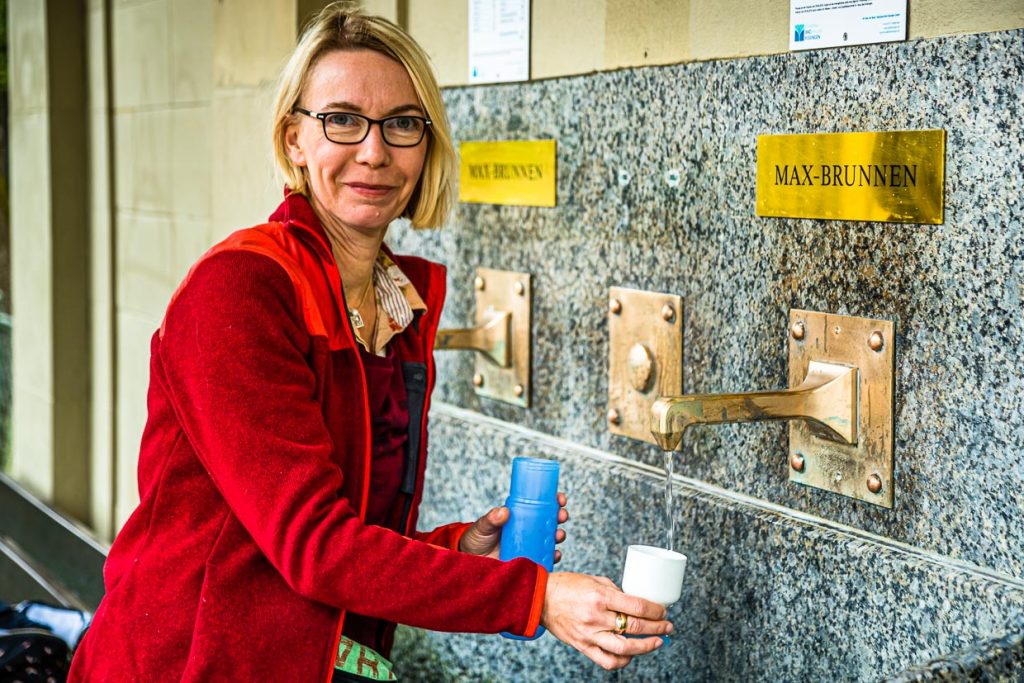
If you don’t have time for a daily trip back in time to the Belle Époche during your cure or rehabilitation stay, you can also fill up with water to take home. However, only to get from one day to the next. The water does not last very long due to its high mineral content. For the many followers of drinking cures in the late 19th century, the water was sent home in clay bottles. But by the third day after bottling at the latest, the water turned brown and became undrinkable. Even Imperial Chancellor Otto von Bismarck once had the wild Rakoszy water sent to him in Berlin.
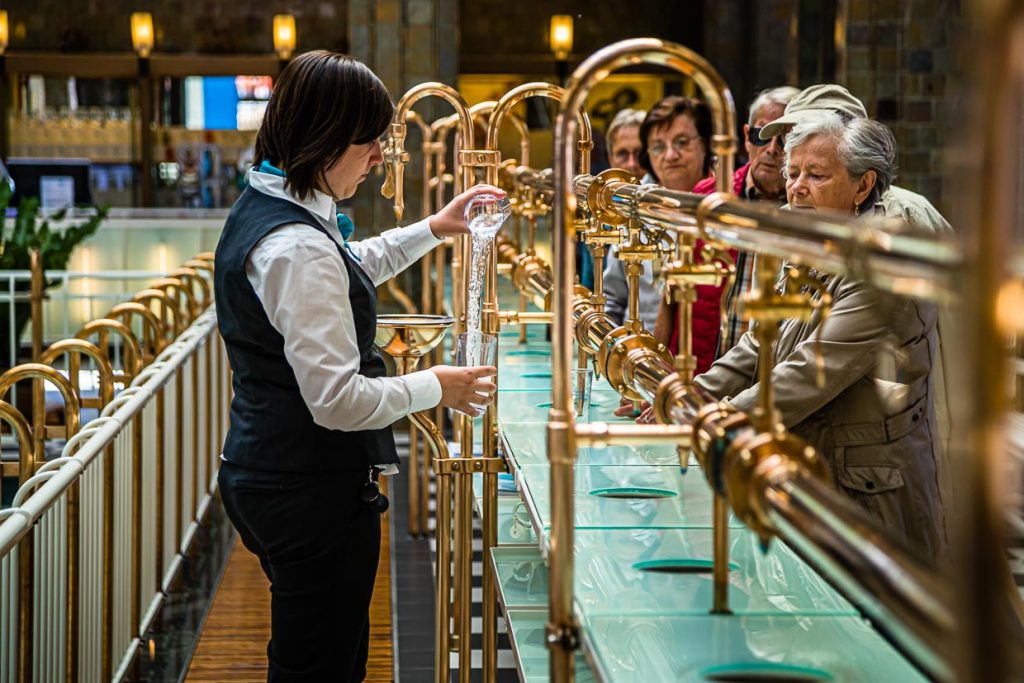
Whether drinking cure, brine bath or inhalation. It is the water that is the focus of a cure in Bad Kissingen. You don’t have to be a water sommelier to taste the differences between Bad Kissingen’s four drinking waters. A glass of Pandur or Rakoszy cannot really be classified as a pleasure at first sip. The metallic notes come to the fore too strongly. As early as 500 years ago, the therapeutic effects of the healing springs were recognized. At the end of the 19th century, the most popular period of the spa industry in Europe began. Today, these healing waters even have official approval as medicines in Germany and are strictly controlled.
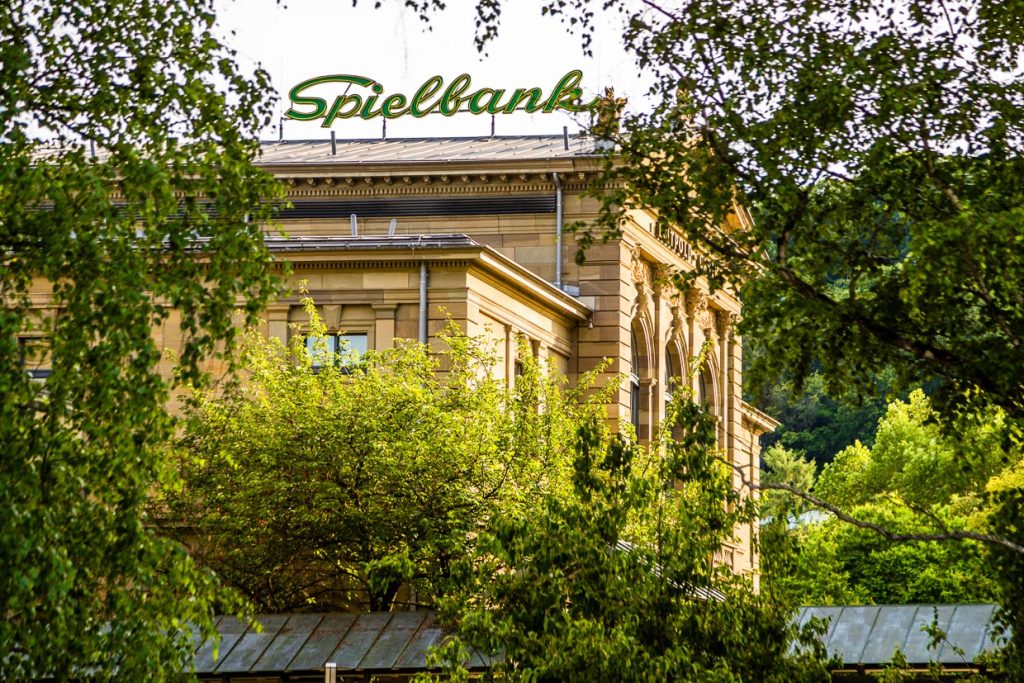
Transformed? Spas through the ages
The great spas of Europe had their heyday in the 19th and early 20th centuries. The nobility and later the wealthy bourgeoisie undertook drinking cures and bath treatments lasting several weeks in Bad Kissingen. Once upon a time, the Russian tsar’s family also met Empress Sisi here. They liked to travel incognito. Sisi booked herself in under the name Countess of Hohenembs. Even today there is the Sisi Suite in the Hotel Kaiserhof Viktoria.
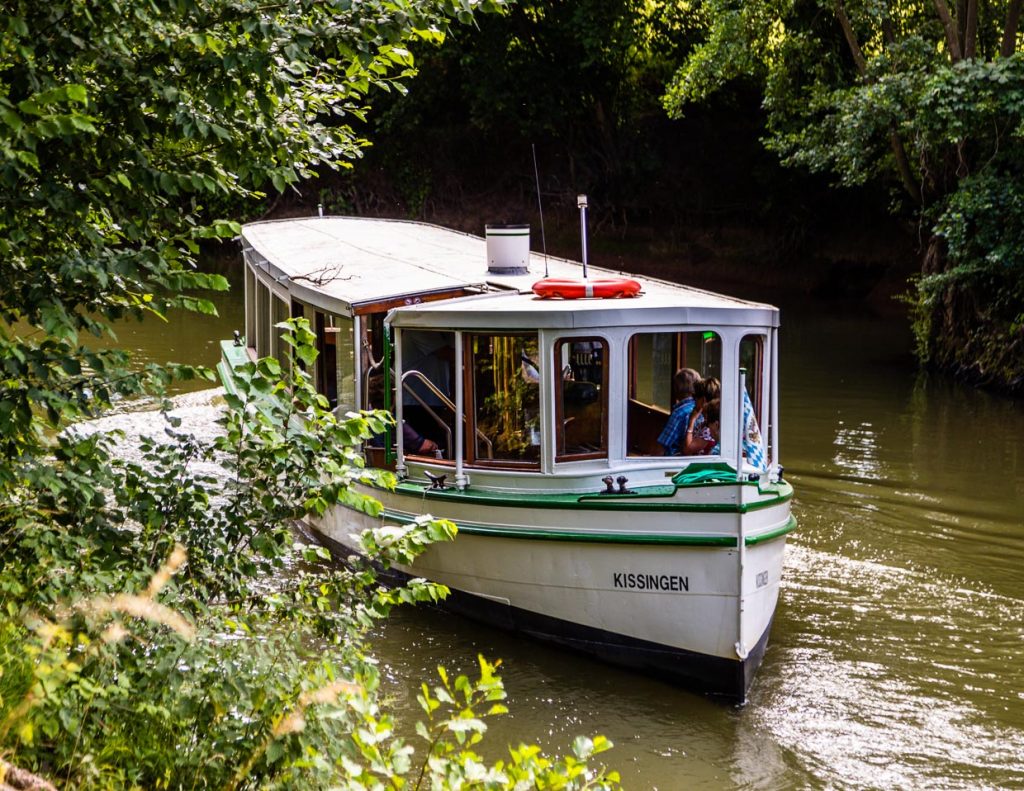
Later, Otto von Bismarck followed as a prominent spa guest. The Chancellor of the Reich visited Bad Kissingen for many years. As the story goes, he took spa treatments very seriously. Bismarck underwent both a drinking cure including a diet plan, took brine baths and drove daily to the graduation house at the upper saline for inhalation. During the years of his spa visits, Bismarck was an extremely popular politician whose sensitivities were discussed by the entire nation. The intrepid Chancellor of the Reich, who was not deterred from further visits even by an assassination attempt during his first visit in 1874, is the subject of a separate Bismarck reportage, in keeping with the cult of personality of the time.
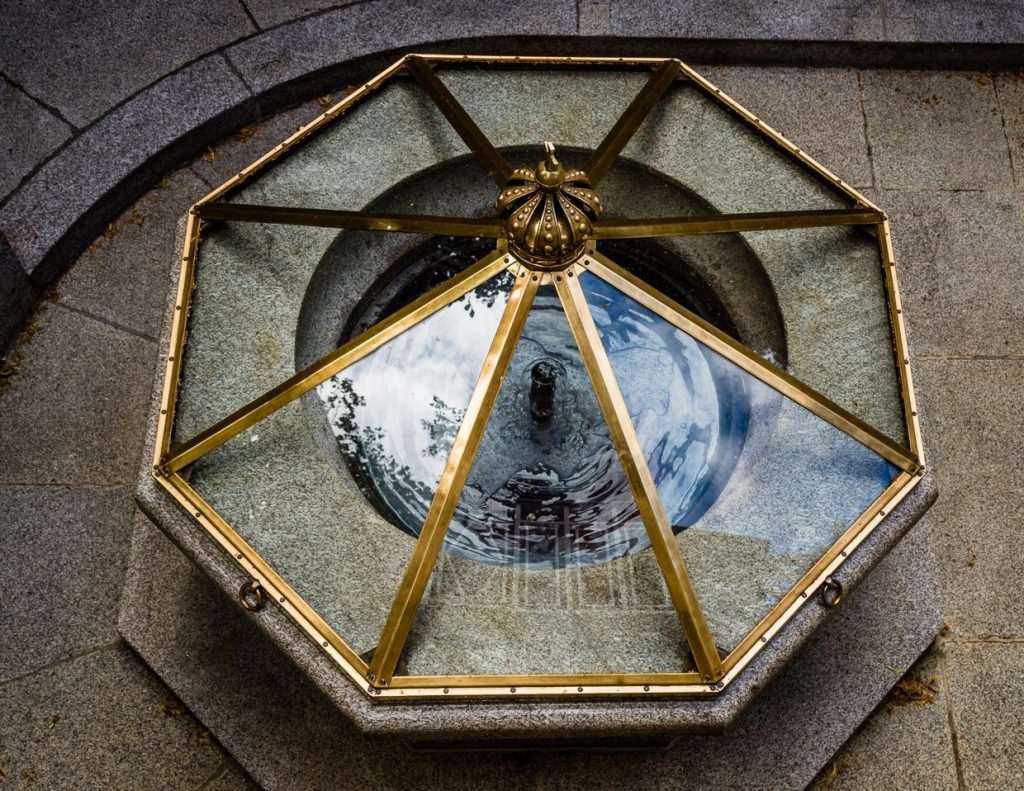
Discover time in Bad Kissingen
Discover time is the slogan Bad Kissingen uses to describe what it has to offer its guests. The chances are not bad that a younger clientele will once again feel like traveling back in time to a historic spa. One thing is for sure, if in 2020 Bas Kissingen succeeds in being included in the World Heritage List and becomes the Great Spa of Europe, the number of day guests from all over the world will increase significantly. What is also desirable, however, are guests who actually take more time in the sense of a cure. After all, the word mindfulness has made it from the insider vocabulary for yogis to a trendy term. Since 2019, mindfulness has even been taught as a subject in British schools. If that’s not a ray of hope for the future of the Great Spas of Europe!
More about Bad Kissingen
Prominent spa guests – Prince Otto von Bismarck in Bad Kissingen
Culinary Bad Kissingen
Wall calendar with photos by Georg Berg available in bookstores (also online) in different sizes: World Heritage Bad Kissingen / also as family planner (*)
The research trip was partly supported on site by Bad Kissingen Tourism
(*) This post contains advertising links (also called affiliate or commission links) that lead to Amazon.de.

